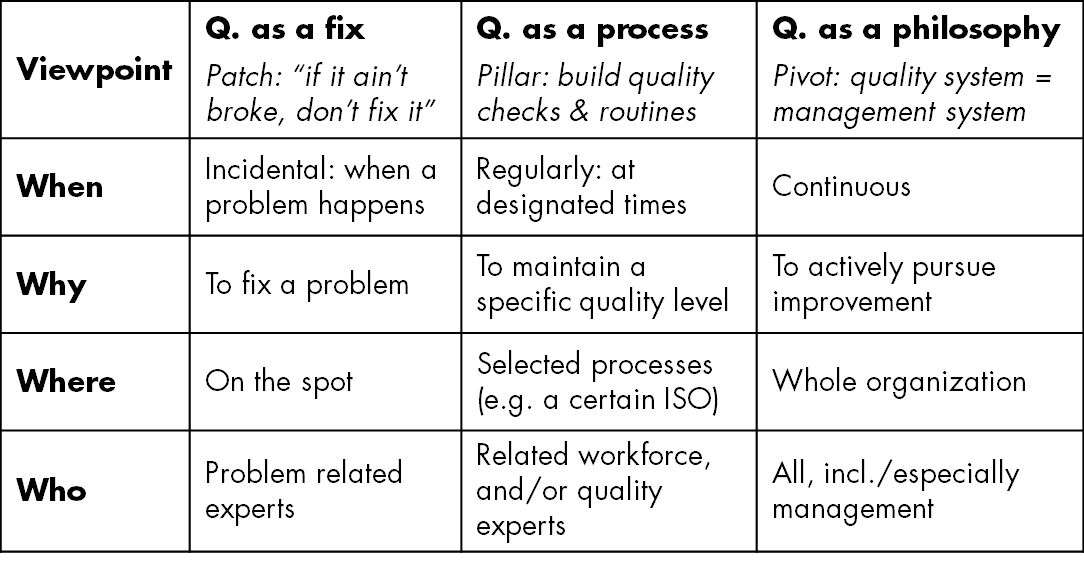In business, working on “quality” and working on “improvement” are more or less synonyms. Oddly enough, this is not always as essential as it seems. There are advantages to doing it, but these may not interest you enough. There are three basic stances towards quality, which determine in a strong way when, where, why, and to whom the concept matters.
1. Quality as a patch. The concept of quality doesn’t interest you as such, while you are confident that what you offer is “good enough”. It only comes into play when something obviously doesn’t work anymore.
2. Quality as a pillar. The concept of quality applies to certain designated places in your business, like critical processes or requirements. You’ll make sure that things run by the book at those places.
3. Quality as the pivot. You see the concept of quality applying to everything. Things can already be better even when they’re working just fine like now. Working on quality / improvement becomes a leading principle.

There is really no “right or wrong” in any of these three. You just have to accept the trade-off between effort and returns, and organize for your quality angle. See it this way:
- If your stance towards quality is the first (which places you in the majority), you should be fairly relaxed about probably not having the most efficient and effective performance. Note that this peace of mind can be very rewarding!
- If you’re in the middle, it is sensible to make explicit which elements of your business should be subject to which quality norms, and make sure that those involved know what to assure.
- If “quality” is your middle name, then you see the benefits it can bring you (in short: higher turnover because of better output, and higher margin because of better systems). In this case, the organizational consequence is that it is sensible to [1] declare “quality” (or improvement) to be a goal, [2] define the work that this goal implies, assign this to people, and assess it like any other work, [3] facilitate this work in terms of time or equipment or resources needed. Note that if your have not done this explicitly, yet these are improvements in working on improvement.
So all of the above are okay, but you should account for the organizational consequences of the different stances. Otherwise you find yourself hoping for the one, while having organized for the other. This happens much more often than you’d think, for instance with freelancers with a low income who just won’t revise their own quality level, or with corporate managers pressing for more quality commitment of the work force, while not having arranged that their people get the time, means, or recognition for it. What is your quality angle, is your organization in sync, and do you enjoy the benefits of that particular stance?
Go for SpeedMBA Online now: the business e-course in which you get ALL OF BUSINESS explained in 300 slides and 60 videos!
